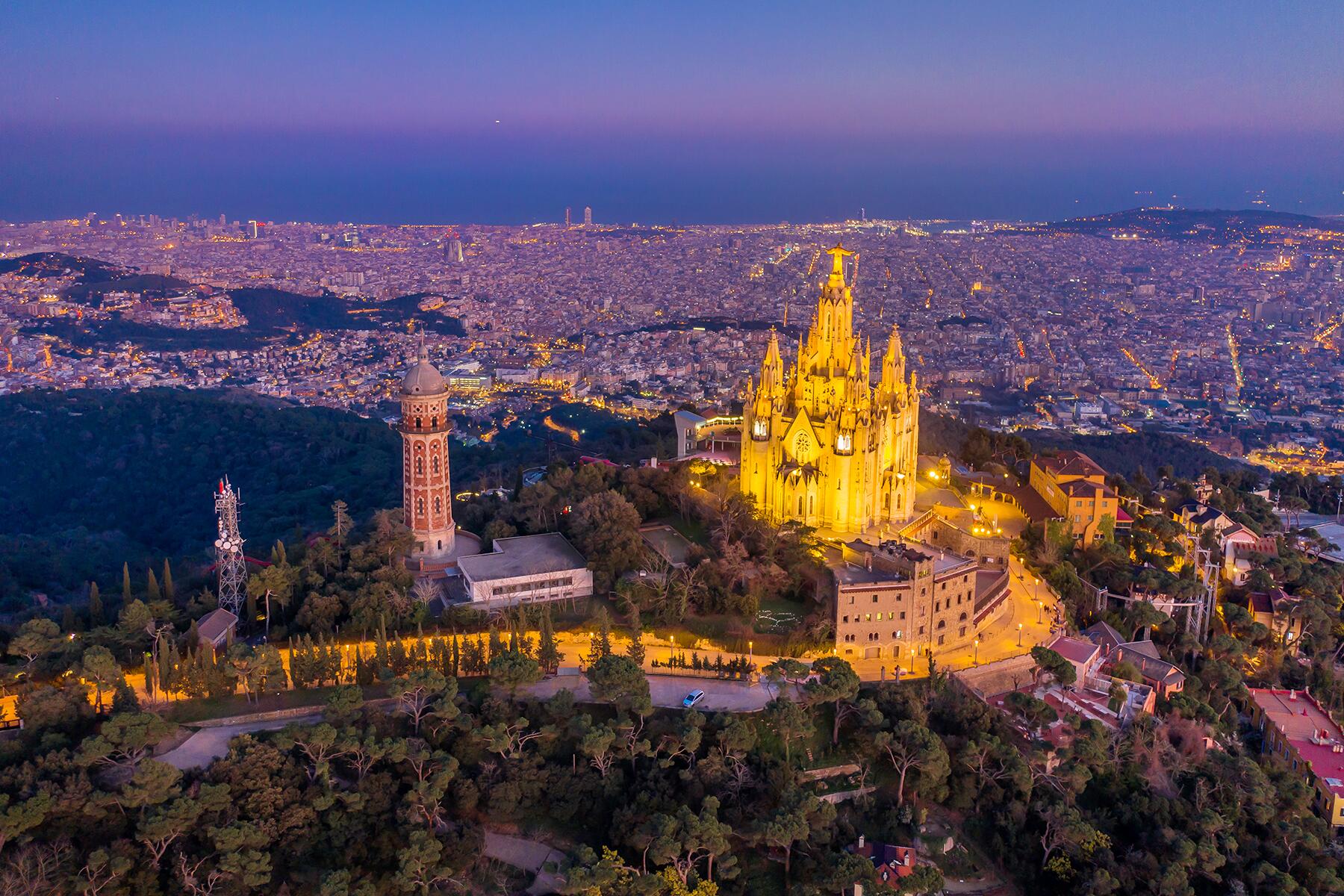Catalonia, Valencia, and the Costa Blanca
Catalonia, Valencia, and the Costa Blanca
The long curve of the Mediterranean from the French border to Cabo Cervera below Alicante encompasses the two autonomous communities of Catalonia and Valencia, with the country's second- and third-largest cities (Barcelona and Valencia, respectively). Rivals in many respects, the two communities share a language, history, and culture that set them apart from the rest of Spain.
Girona is the gateway to Northern Catalonia's attractions—the Pyrenees, the volcanic region of La Garrotxa, and the beaches of rugged Costa Brava. Northern Catalonia is memorable for the soft, green hills of the Empordà farm country and the Alberes mountain range at the eastern end of the Pyrenees. Across the landscape are masías (farmhouses) with staggered-stone roofs and square towers that make them...
Read MoreThe long curve of the Mediterranean from the French border to Cabo Cervera below Alicante encompasses the two autonomous communities of Catalonia and Valencia, with the country's second- and third-largest cities (Barcelona and Valencia, respectively). Rivals in many respects, the two communities share a language, history, and culture that set them apart from the rest of Spain.
Girona is the gateway to Northern Catalonia's attractions—the Pyrenees, the volcanic region of La Garrotxa, and the beaches of rugged Costa Brava. Northern Catalonia is memorable for the soft, green hills of the Empordà farm country and the Alberes mountain range at the eastern end of the Pyrenees. Across the landscape are masías (farmhouses) with staggered-stone roofs and square towers that make them look like fortresses. Even the tiniest village has its church, arcaded square, and rambla, where villagers take their evening paseo (stroll).
Salvador Dalí’s deep connection to the Costa Brava is enshrined in the Teatre-Museu Dalí in Figueres: he’s buried in the crypt beneath it. His wife Gala is buried in his former home, a castle in Púbol. His summer home in Port Lligat Bay, north of Cadaqués, is now a museum of his life and work.
The province of Valencia was incorporated into the Kingdom of Aragón, Catalonia's medieval Mediterranean empire, when it was conquered by Jaume I in the 13th century. Along with Catalonia, Valencia became part of the united Spanish state in the 15th century, but defenders of its separate cultural and linguistic identity still resent the centuries of Catalan domination. The Catalan language prevails in Tarragona, a city and province of Catalonia, but Valenciano—a dialect of Catalan—is spoken and used on street signs in the Valencian provinces.
The fertile, irrigated coastal plain is devoted mainly to citrus and vegetable farming, which lends color to the landscape and fragrance to the air. Arid mountains form a stark backdrop to the lush coast. Over the years these shores have entertained Phoenician, Greek, Carthaginian, and Roman visitors; the Romans stayed several centuries and left archaeological remains all the way down the coast, particularly in Tarragona, the capital of Rome's Spanish empire by 218 BC. Rome's dominion did not go uncontested, however; the most serious challenge came from the Carthaginians of North Africa. The three Punic Wars, fought over this territory between 264 and 146 BC, established the reputation of the Carthaginian general Hannibal.
The coastal farmland and beaches that attracted the ancients now call to modern-day tourists, though in parts, a number of "mass-tourism" resorts have marred the shore. Inland, however, local culture survives intact. The rugged and beautiful territory is dotted with small fortified towns, several of which bear the name of Spain's 11th-century national hero, El Cid, commemorating the battles he fought here against the Moors some 900 years ago.
Recommended Fodor’s Video
Hotels
Things to Do
Things to Do
Explore Things to Do
Find the perfect tours and activities in Catalonia, Valencia, and the Costa Blanca.
Where to Eat
Where to Eat
Need to Know
Need to Know
Language
SpanishNearby Airports
VLC, REUElectrical Outlets
220v/50 cycles; electrical plugs have two round prongsCurrency
EuroLanguage
SpanishElectrical Outlets
220v/50 cycles; electrical plugs have two round prongsCurrency
EuroNearby Airports
VLC, REUWhen to Go
Come for the beaches in the hot summer months, but expect crowds and serious heat—in some places up to 40°C (104°F). The Mediterranean coast...Read More
Neighborhood Guides
Discover the best neighborhoods in Catalonia, Valencia, and the Costa Blanca with curated recommendations from our editors.
essentials
transportation
When to Go
Come for the beaches in the hot summer months, but expect crowds and serious heat—in some places up to 40°C (104°F). The Mediterranean coast...Read More
Neighborhood Guides
Discover the best neighborhoods in Catalonia, Valencia, and the Costa Blanca with curated recommendations from our editors.
When to Go
Come for the beaches in the hot summer months, but expect crowds and serious heat—in some places up to 40°C (104°F). The Mediterranean coast...Read More
Neighborhood Guides
Discover the best neighborhoods in Catalonia, Valencia, and the Costa Blanca with curated recommendations from our editors.
essentials
transportation
Articles
Articles See All
Guidebooks
Guidebooks
Our worldwide travel correspondents bring you the best and most up-to-date coverage of over 7,500 global destinations.
Shop NowFodor's Barcelona: with Highlights of Catalonia
Whether you want to tour Parc Cüell, explore the Barri Gòtic, or marvel at the Sagrada...
Fodor's Essential Spain 2024
For over 80 years, Fodor's Travel has been a trusted resource offering expert travel...














